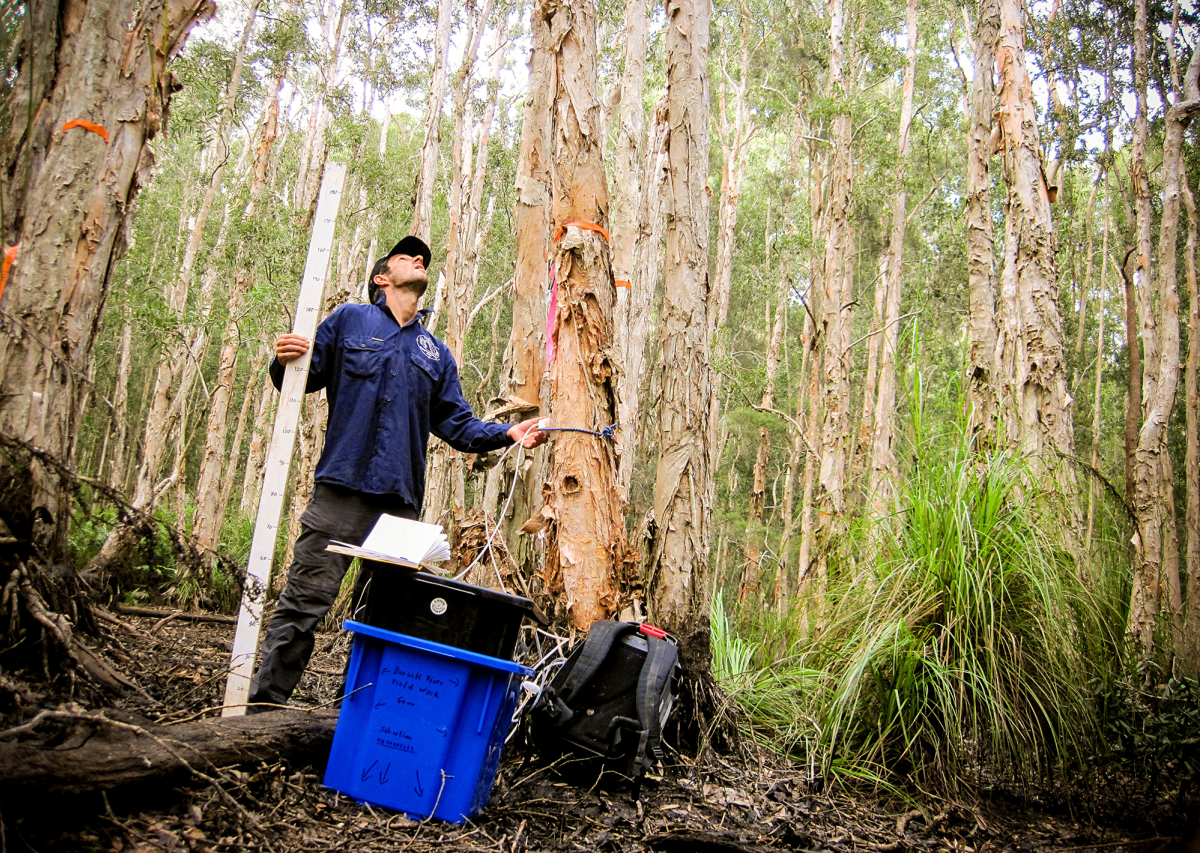At Picarro, we love seeing how researchers are using our systems in their studies. We’d like to thank Dr. Luke Jeffrey and the entire team at Southern Cross University Geoscience for sharing their amazing work on methane emissions from trees. Enjoy!
By Dr Luke Jeffrey - SCU Geoscience
This video summarizes some of the research being conducted by the SCU Geoscience team and Dr. Luke Jeffrey, investigating methane emissions from tree stems.
Tree methane (aka ‘Treethane’) emissions have been referred to as 'a new frontier in the global carbon cycle', (Barba et al., 2019) representing a field that is gaining rapid research momentum. Whilst this line of research is now my primary focus, it wasn’t always that way. During the first half of my PhD, I spent plenty of my time donning waders, evading snakes and mosquitos, whilst hunting for cryptic methane emissions from freshwater wetlands. Measuring tree stem emissions came later. Earth’s freshwater wetlands represent the largest natural methane (and mosquito) source. Methane - a potent greenhouse gas – is about 34 times more powerful at warming Earth's atmosphere than carbon dioxide, therefore in the context of climate change, understanding the natural sinks and sources is important.
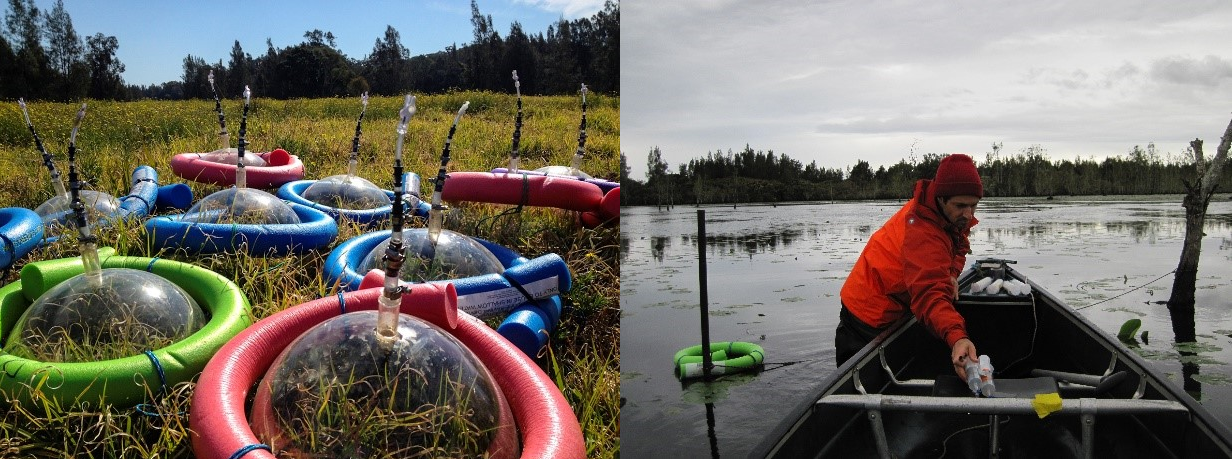
Methane ebullition traps ready to deploy (left) and collecting ebullition gas samples from the wetland to analyse through the Picarro G2201-i isotopic analyser on shore (right).
Australia’s wetland methane emissions remain poorly accounted for in the global methane budget estimates and are prone to dynamic hydrological oscillations between floods and droughts, influencing their methane emitting capacity. My early PhD research focused on quantifying wetland methane emissions pathways such as ebullition (bubbles), aquatic diffusion and various herbaceous plant-mediated emissions, using a range of methane flux chamber types and sizes coupled to our Picarro G2201-i isotopic analyser, deployed in situ. Our first wetland methane study revealed that over the annual cycle, plant-mediated methane emissions through water lily represented the dominant emissions pathway (~60% of total methane emissions) from a shallow freshwater subtropical wetland (Cattai Wetland). Our second (companion) study demonstrated that herbaceous wetland plant species were also acting as methane conduits from sedimentary methane sources, with both studies clearly highlighting the important role of plant-mediated methane emissions within wetland biomes.
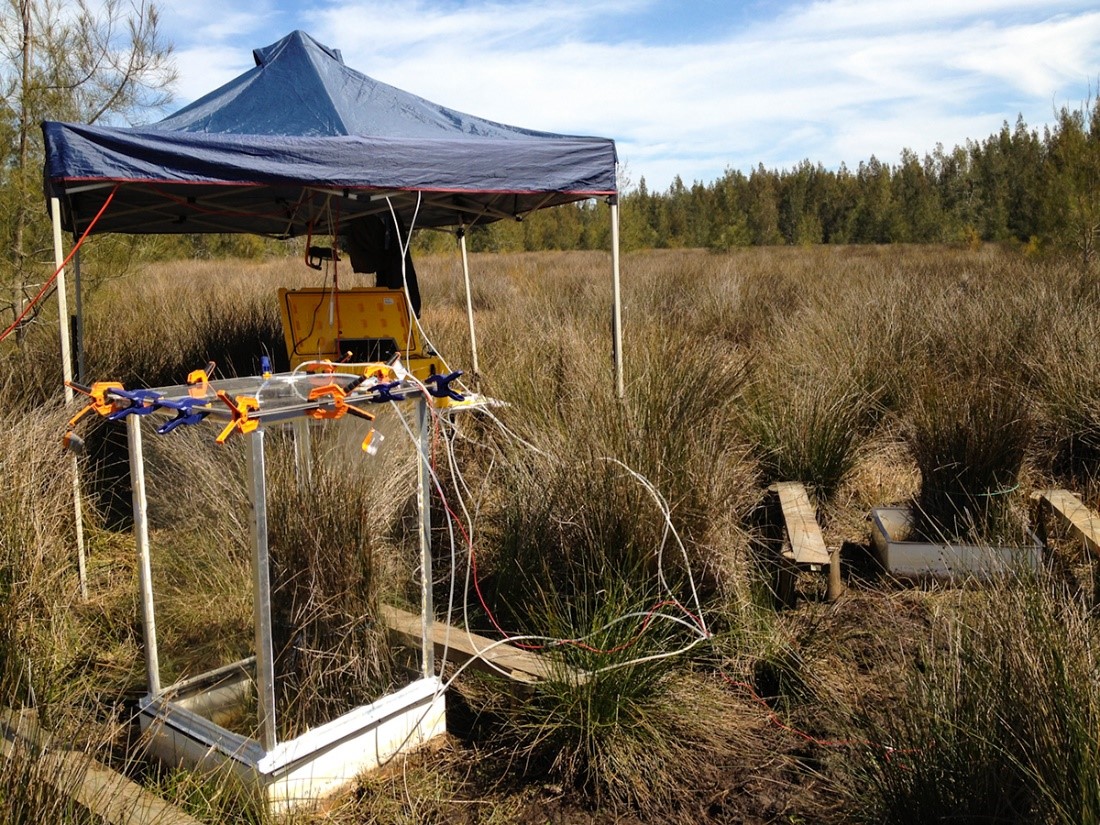
24 h time series chamber deployments measuring plant-mediated methane fluxes from Juncus sp. in a seasonal wetland site, coupled directly to Picarro G2201-i isotopic analyser.
Subsequently, around the time we were filming videos of ourselves doing this,
there were videos from the northern hemisphere emerging of researchers doing this,
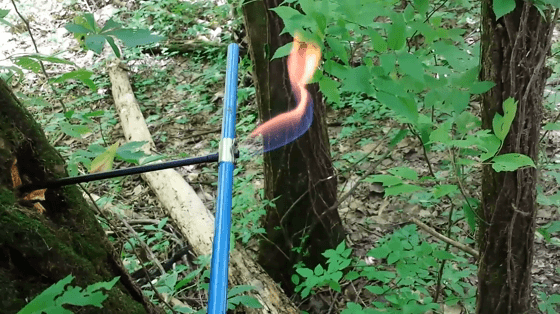
Footage provided with permission of Yip et al., (2019), Methanogenic Archaea dominate mature heartwood habitats of Eastern Cottonwood (Populus deltoides). New Phytologist, 222: 115-121. https://nph.onlinelibrary.wiley.com/doi/full/10.1111/nph.15346
which left us pondering….what was the potential role of trees to the total wetland methane budget? Around this same time Pangala et al., (2017) published a significant paper demonstrating that tree stem emissions accounted for ~50% of the total methane emissions from the Amazonian wetlands, providing further evidence, incentive and growing enthusiasm for our team to transition into measuring tree stem fluxes down-under.
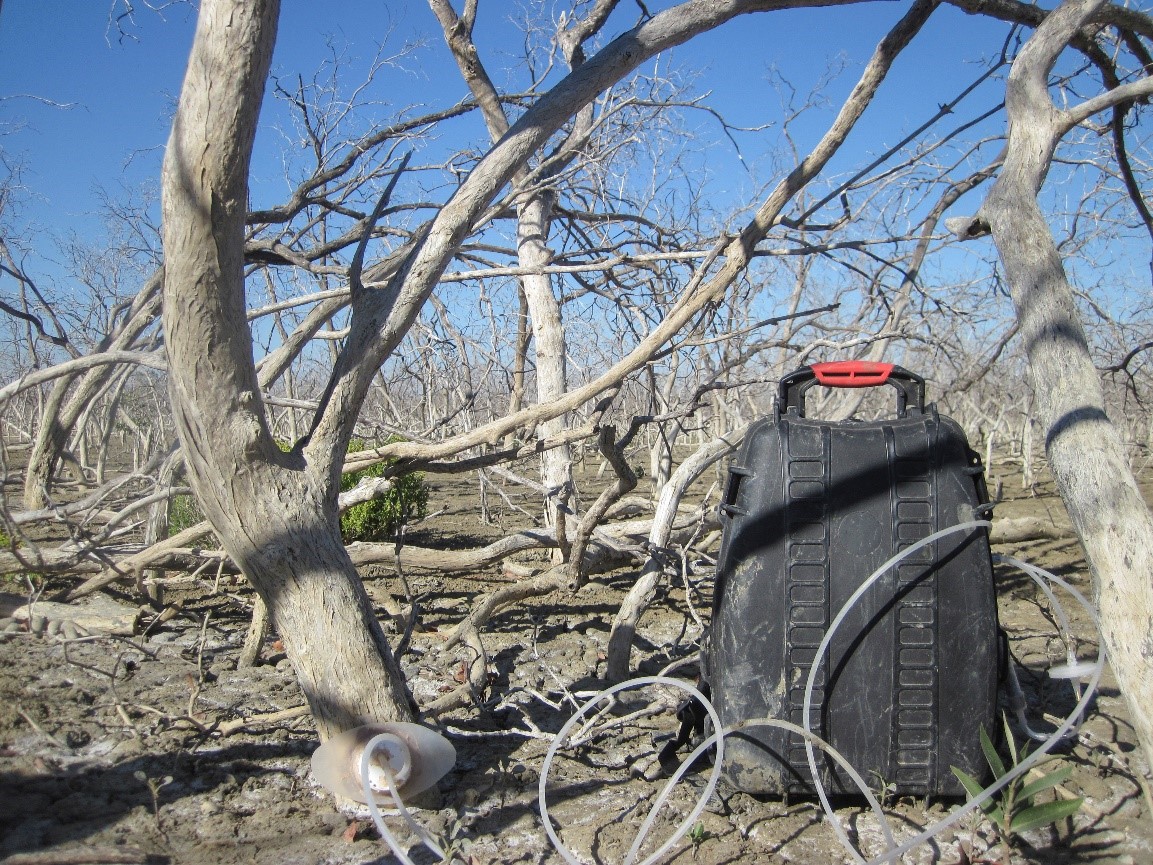
Measuring tree stem emissions from remote dead tropical-arid mangroves in the Gulf of Carpentaria, Australia, using our portable cavity ring-down spectrometer (Picarro GasScouter G4301) and SNIFF chamber.
Our first objective was to develop, test and validate a new technique using a micro chamber that was Small and Nimble for In situ Fast Flux measurements (a.k.a. ‘SNIFF’ method). This method would enable rapid and high resolution greenhouse gas flux measurements on tree stems across a variety of bark surfaces and in remote locations, when coupled to newly acquired portable cavity ring-down spectrometer backpack (Picarro GasScouter G4301). Due to the small chamber volume we found this was also ideal for measuring δ13C-CH4 isotopic ratios in situ, when coupled with our Picarro G2201-i isotopic analyser (see results in here). We then began our journey investigating tree stem emissions from different forest biomes, ranging from saline wetland forest including both dead mangroves and living mangroves, and freshwater forested wetlands dominated by the Australian paperbark (Melaleuca quinquenervia) and swamp Oak (Casuarina glauca).
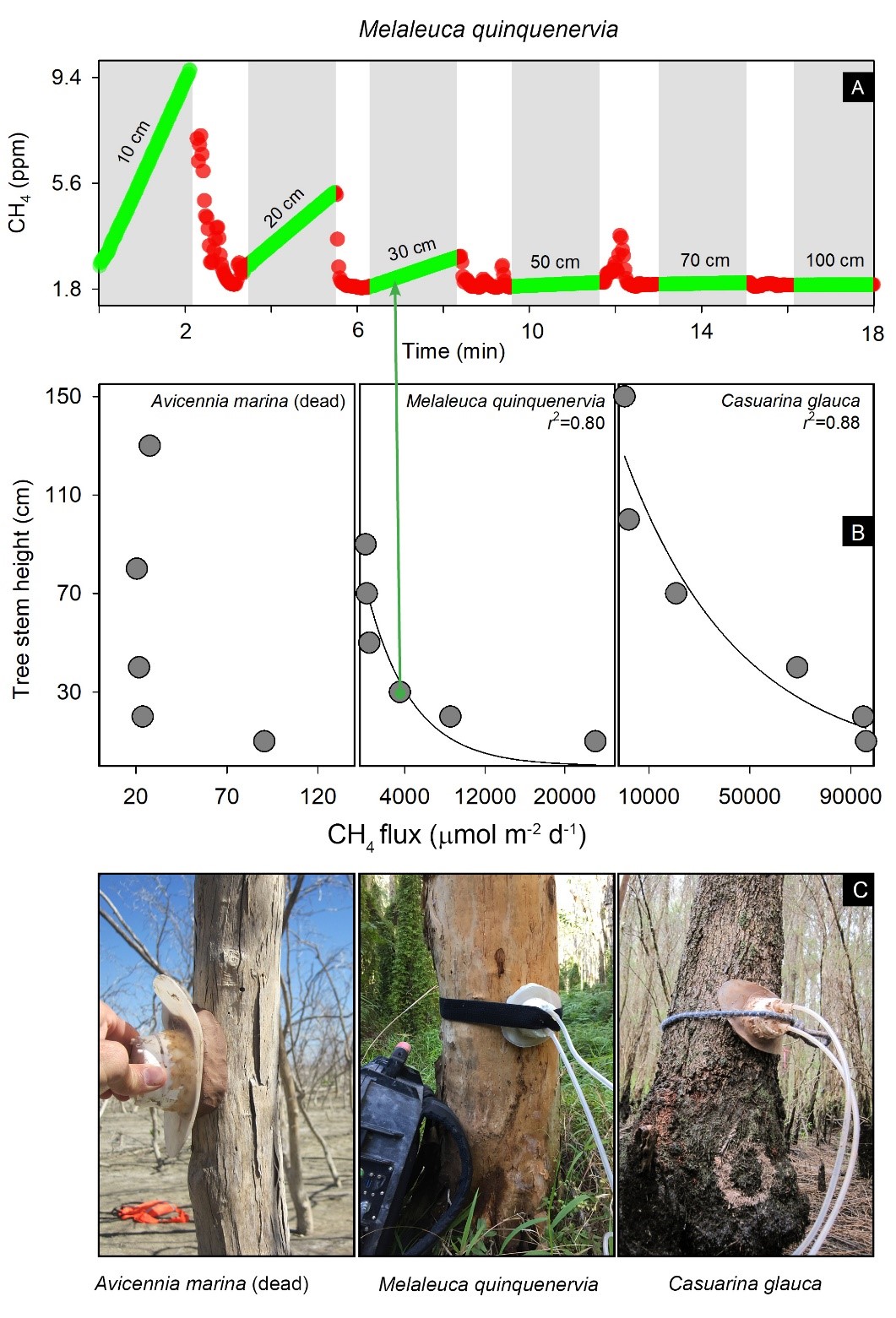
Examples of the SNIFF chamber method allowing us to capture rapid vertical tree stem flux measurement from various bark surfaces and forest types when coupled with our Picarro GasScouter G4301.
Our first tree stem publication in New Phytologist- revealing that both dead and living mangroves were methane emitters, presenting novel implications for blue carbon budgets, however, was just a small contribution to the pioneer research and growing body of evidence, suggesting that forested wetlands and upland forest carbon budgets may need a re-think. With an estimated three trillion trees on earth, and plans to combat anthropogenic climate change by planting more trees - even relatively small methane emissions per tree may collectively represent a substantial and currently un-accounted for natural methane emissions source. Therefore, this line of research will potentially help land managers, decision makers and global carbon accounting schemes to make informed decisions about which trees to plant, where to plant them and ways to maximise the carbon sequestration in forests, whilst mitigating potential and unwanted methane emissions.
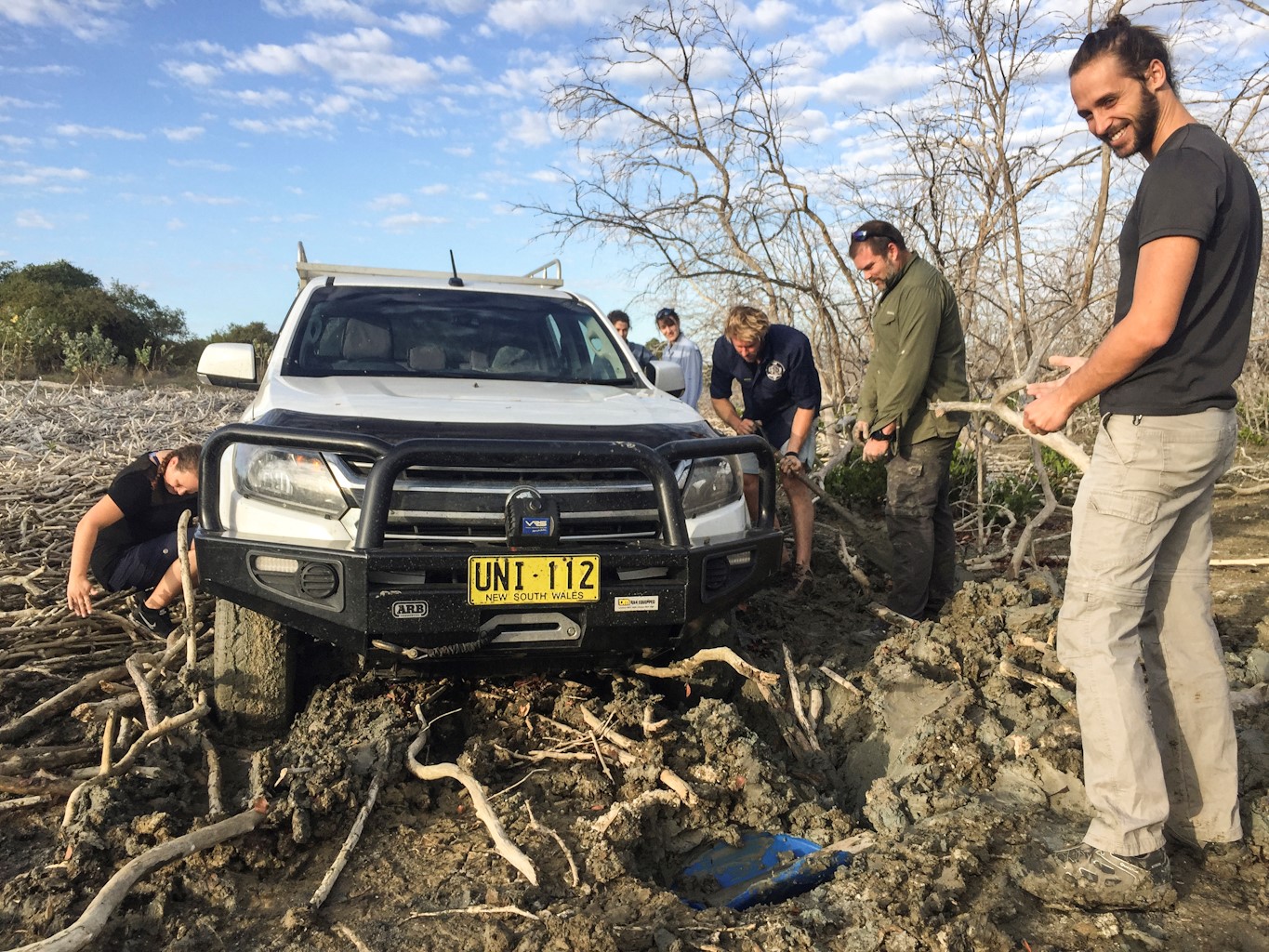
Bogged somewhere in the Gulf of Carpentaria, Australia where over 1000 km of tropical-arid mangroves died in 2016 – the location of the first mangrove tree methane study.
This ‘treethane’ video was originally created for the ‘Pitch it Clever’ research competition but was also a great opportunity to summarise and share some of the current research and methods the SCU GeoScience team and myself are using to investigate the potential drivers and processes controlling methane emissions from tree stems. This research is supported by Southern Cross University, Southern Cross Geoscience and the Australian Research Council with grants and support from my supervisors Prof. Scott Johnston, Assoc. Prof. Damien Maher and Dr Douglas Tait. The video was filmed and edited by my good friend Mike Calvino.
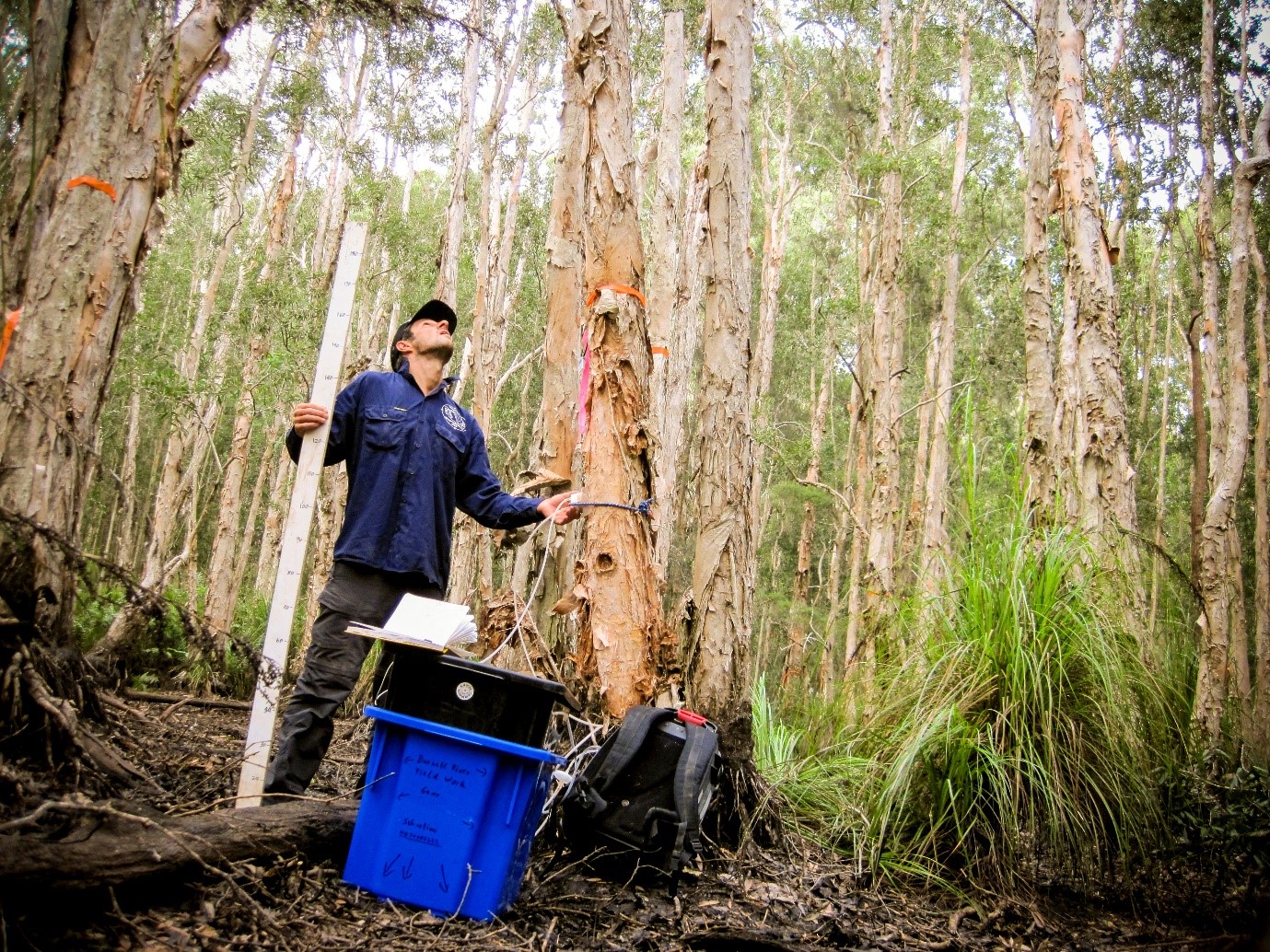
Measuring tree stem methane emissions from subtropical paperbark forest (Melaleuca quinquenervia) using our Picarro GasScouter G4301.
About the author:
Dr. Luke Jeffrey is an early career biogeochemist and currently a postdoc with SCU Geoscience. Luke’s PhD research investigated the effects of human impacts upon the coastal carbon cycle, across a range of biomes including estuaries, mangroves and freshwater wetlands. Luke’s research has uncovered new drivers and cryptic plant-mediated pathways of greenhouse gases from endemic Australian flora including Phragmites australis, Juncus sp., Nymphaea sp., and never before studied paperbark (Melaleuca quinquenervia), swamp-oak (Casuarina glauca) and both dead and living mangrove forest (Avicenna marina). Although only completing his PhD in February 2020, Luke has already published 12 peer-reviewed papers in top journals within his field, seven of these as first-author. Luke was awarded a CSIRO scholarship and funding for the duration of his PhD and was awarded the 2020 Chancellor’s Medal for his thesis: “Cryptic drivers of methane and carbon dioxide emissions from disturbed coastal wetlands.” Luke’s current position with SCU Geoscience is focused on quantifying and determining the drivers of tree stem methane emissions across a variety of biomes.
